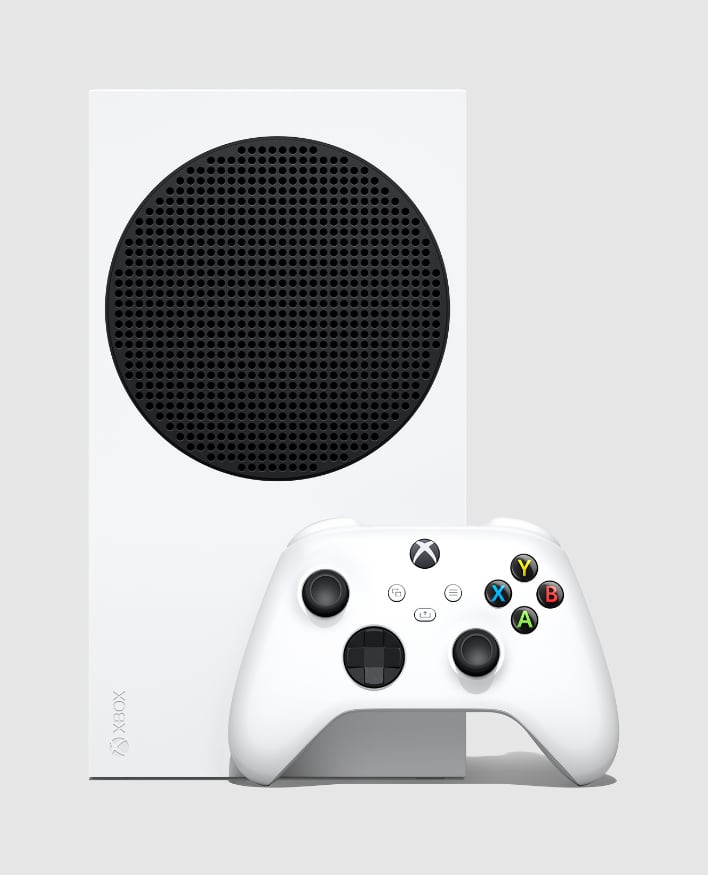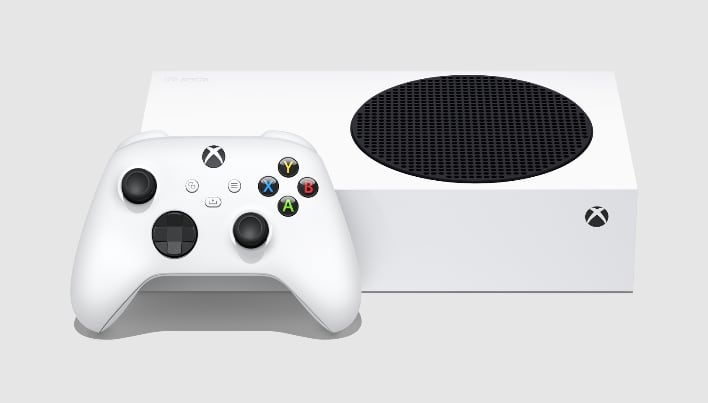Xbox Series S Specs Dump Confirms 3.6GHz 8-Core AMD Zen 2 CPU And 4 TFLOP RDNA 2 GPU
On the processing front, Xbox Series S still gets its primary motivation from an 8-core Zen 2-based CPU, however, it’s running at a slightly lower clock speed (3.6GHz versus 3.8GHz in the Xbox Series X). Still, processing power is four times greater than its predecessor, the Xbox One S. 10GB GDDR6 memory with 224GB/sec of bandwidth is included in the system.
The biggest performance difference compared to the Xbox Series X comes from the downgraded RDNA 2 GPU, which has 20 CUs operating at 1.55GHz offering up roughly 4 TFLOPs compute performance. This is compared to 52 CUs running at 1.825GHz on the 12 TFLOP Xbox Series X. In other words, the Xbox Series X GPU is about three times as powerful, which explains why it can handle 120fps 4K gaming.
On the Xbox Series S, however, Microsoft is targeting 120fps at 1440p. But a hardware 4K scaler is included for those that still want to connect their Xbox Series S to a 4K television. Even though it can’t compete with the Xbox Series X when it comes to overall graphical might, Microsoft says that the Xbox Series S GPU offers a 3x uplift compared to the Xbox One S, which was designed to hit 60fps at 1440p. You can watch gaming footage at 1440p in the video embed above.

“The primary difference between Xbox Series X and Xbox Series S is in resolution.,” said Liz Hamren, Head of Platform Engineering and Hardware. “Through talking to our customers, we found that many of our fans prioritize framerate over resolution, so we wanted to build a console that didn’t require a 4K TV.”
As we previously reported, the Xbox Series S features a 512GB PCIe 3.0 SSD that uses the same Xbox Velocity Architecture as the Xbox Series X. As a result, it has “identical I/O performance as Xbox Series X.” However, we don’t have any qualms about the performance, but rather the limited storage capacity. Given that it has half the storage, and all games will need to be downloaded from the internet, Xbox Series S users will be seriously constrained when it comes to storage space, making them even more reliant on the proprietary external storage modules that will be manufactured by Seagate.

Overall, it looks as though there is feature parity between the Xbox Series X and the Xbox Series S throughout the gaming stack with the primary differentiator being your preference for playing at 4K or 1440p resolutions. If 4K isn’t that big of a deal to you, and you don’t mind the loss of the Blu-ray drive and the 512GB SSD, $299 seems like a good deal for those looking to get their toes wet with next-generation console gaming.


